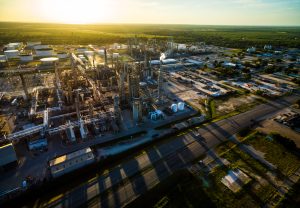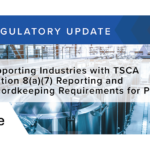
A Phase 2 Environmental Site Assessment (ESA) is a critical step in ensuring environmental protection during the development of land in Norman. This comprehensive investigation assesses the presence and extent of environmental contamination on a property, allowing for informed decision-making regarding redevelopment or remediation efforts.
Understanding the Importance of Phase 2 Environmental Site Assessments
Phase 2 Environmental Site Assessments play a fundamental role in safeguarding human health and the environment. By identifying potential contaminants in soil, groundwater, and sediments, these assessments enable professionals to evaluate risks associated with the site and develop appropriate mitigation strategies.
The Role of Phase 2 Assessments in Environmental Protection
Phase 2 Assessments serve as a vital tool in protecting the environment from various hazardous substances, such as petroleum hydrocarbons, heavy metals, and volatile organic compounds. These assessments provide a thorough understanding of the site’s environmental condition, which is crucial for ensuring compliance with environmental regulations and reducing potential health risks to the public.
Key Components of a Phase 2 Environmental Site Assessment
A Phase 2 ESA typically comprises several integral components. Firstly, it involves a detailed site investigation, including a review of historical records and interviews with previous site managers or owners. This is followed by comprehensive field sampling and laboratory analysis to assess soil, groundwater, and sediment quality.
Furthermore, Phase 2 Assessments involve data interpretation and report generation. This entails analyzing the collected data, evaluating potential risks, and providing recommendations for further action, such as remediation or monitoring.
The Process of Conducting a Phase 2 Environmental Site Assessment in Norman
Conducting a Phase 2 Environmental Site Assessment requires careful planning, fieldwork, and data analysis. In Norman, the process typically consists of three main stages: pre-assessment preparations, field sampling and laboratory analysis, and data interpretation and report generation.
Pre-Assessment Preparations
Prior to commencing fieldwork, thorough preparations are vital to ensure an efficient and effective Phase 2 Assessment. This involves conducting a thorough review of existing site information, identifying potential contaminants of concern, and developing a sampling plan tailored to the specific site characteristics.
The sampling plan outlines the number and locations of soil borings, groundwater monitoring wells, and sediment samplings, considering factors such as site history, land use, and nearby potential sources of contamination.
Field Sampling and Laboratory Analysis
Field sampling forms a crucial component of Phase 2 Assessments. Highly trained environmental professionals collect samples from targeted areas following established protocols. These samples are then analyzed in accredited laboratories to determine the presence and concentration of contaminants.
Depending on the site characteristics and the contaminants of concern, sampling methods may include the use of soil borings, groundwater monitoring wells, and sediment samplings. The collected samples undergo rigorous laboratory analysis, providing accurate data for subsequent evaluation.
Data Interpretation and Report Generation
Once the laboratory analysis is complete, the Phase 2 Assessment enters the data interpretation and report generation phase. Environmental experts evaluate the results, compare them to applicable regulatory standards, and assess potential risks to human health and the environment.
Based on the findings, comprehensive reports are generated detailing the assessment process, data analysis, and recommendations for further action. These reports provide valuable information to stakeholders, enabling them to make informed decisions regarding site redevelopment or remediation efforts.
Regulatory Framework for Phase 2 Environmental Site Assessments
A robust regulatory framework governs Phase 2 Environmental Site Assessments in Norman. Environmental laws at the federal and state level establish the standards and protocols required to protect human health and the environment during site assessments. Compliance with these regulations is essential for ensuring accurate and reliable assessments.
Federal and State Environmental Laws
Norman’s Phase 2 Environmental Site Assessments adhere to federal laws such as the Comprehensive Environmental Response, Compensation, and Liability Act (CERCLA), commonly known as Superfund. This legislation empowers federal authorities to respond to releases or threatened releases of hazardous substances, ensuring the cleanup of contaminated sites.
Additionally, state-level regulations, such as Oklahoma’s Voluntary Cleanup Program, provide guidance and oversight for Phase 2 Assessments. These programs aim to encourage responsible parties to voluntarily investigate and remediate contaminated sites, mitigating potential risks to the environment and public health.
Compliance and Enforcement Mechanisms
Compliance with environmental regulations is enforced through various mechanisms in Norman. Regulatory agencies conduct routine inspections to ensure that Phase 2 Assessments adhere to established protocols and standards. Non-compliance can result in penalties, fines, or legal actions to compel remediation efforts.
Furthermore, periodic updates and revisions to environmental laws and regulations are implemented to address emerging challenges and standards, ensuring ongoing protection and accountability in Phase 2 Environmental Site Assessments.
Challenges and Solutions in Phase 2 Environmental Site Assessments
Conducting Phase 2 Environmental Site Assessments in Norman presents its own unique set of challenges. Recognizing and overcoming these obstacles is crucial for maintaining the integrity and effectiveness of the assessment process.
Common Obstacles in Conducting Assessments
One common challenge in Phase 2 Assessments is the identification and delineation of contaminated areas, particularly in complex sites with multiple potential sources of contamination. Thorough data interpretation and investigative skills are essential for accurately understanding the distribution, concentration, and migration pathways of contaminants.
Another challenge arises from the availability of resources, such as funding and specialized equipment, necessary for thorough field sampling and laboratory analysis. Overcoming resource limitations through collaboration and innovative approaches enhances the accuracy and reliability of Phase 2 Assessments.
Technological Innovations for Efficient Assessments
Technological advancements have revolutionized Phase 2 Environmental Site Assessments, making them more efficient and accurate. Innovative tools, such as remote sensing, aerial drones, and advanced analytical techniques, enable professionals to gather precise information about contaminated areas, potentially reducing time and costs associated with traditional sampling methods.
Additionally, the use of geographic information systems (GIS) enhances the visualization and spatial analysis of assessment data. GIS allows for the integration of data from multiple sources, facilitating comprehensive site characterization and informed decision-making.
The Future of Environmental Site Assessments in Norman
The field of environmental site assessments in Norman is continuously evolving to address emerging trends and challenges. As the understanding of environmental risks expands, the assessment practices and technologies will adapt to meet new demands.
Emerging Trends in Environmental Site Assessments
One emerging trend in environmental site assessments is the increasing incorporation of sustainability and resilience considerations. Assessments are moving beyond contamination-based evaluations, focusing on evaluating the long-term impacts of development on ecological systems, climate change resilience, and sustainable land use practices.
Additionally, there is a growing emphasis on community engagement and public participation in the assessment process. Recognizing the importance of diverse perspectives and local knowledge contributes to more comprehensive and inclusive decision-making.
The Impact of Climate Change on Future Assessments
Climate change presents a significant challenge to future environmental site assessments. Rising sea levels, increased flooding events, and extreme weather patterns necessitate a deeper understanding of the potential impacts on contaminated sites and their surrounding environment.
Future assessments will require a proactive approach to consider potential climate change-induced risks, ensuring the long-term sustainability and resilience of developments. Incorporating climate change considerations into assessment methodologies will enhance preparedness and adaptation efforts in the face of a changing environment.
In conclusion, Phase 2 Environmental Site Assessments play a vital role in Norman’s environmental protection efforts. By providing a comprehensive understanding of contamination risks, adhering to regulatory frameworks, and incorporating innovative technologies, these assessments promote informed decision-making and sustainable land development practices. As they evolve to address emerging trends and challenges, environmental site assessments in Norman will continue to advance environmental stewardship and the pursuit of a greener future.
As we navigate the complexities of environmental stewardship in the face of climate change and urban development, the expertise of ESE Partners becomes invaluable. Our team at Environmental Science and Engineering Partners is dedicated to responsibly moving your business forward with sustainable and innovative solutions to environmental challenges. Whether you require a Phase 2 Environmental Site Assessment in Norman or any other environmental service, we are equipped to provide thorough assessments, remediation plans, and compliance strategies tailored to your unique needs. Request A Proposal today and partner with us to ensure your project’s success while contributing to a healthier environment for future generations.








